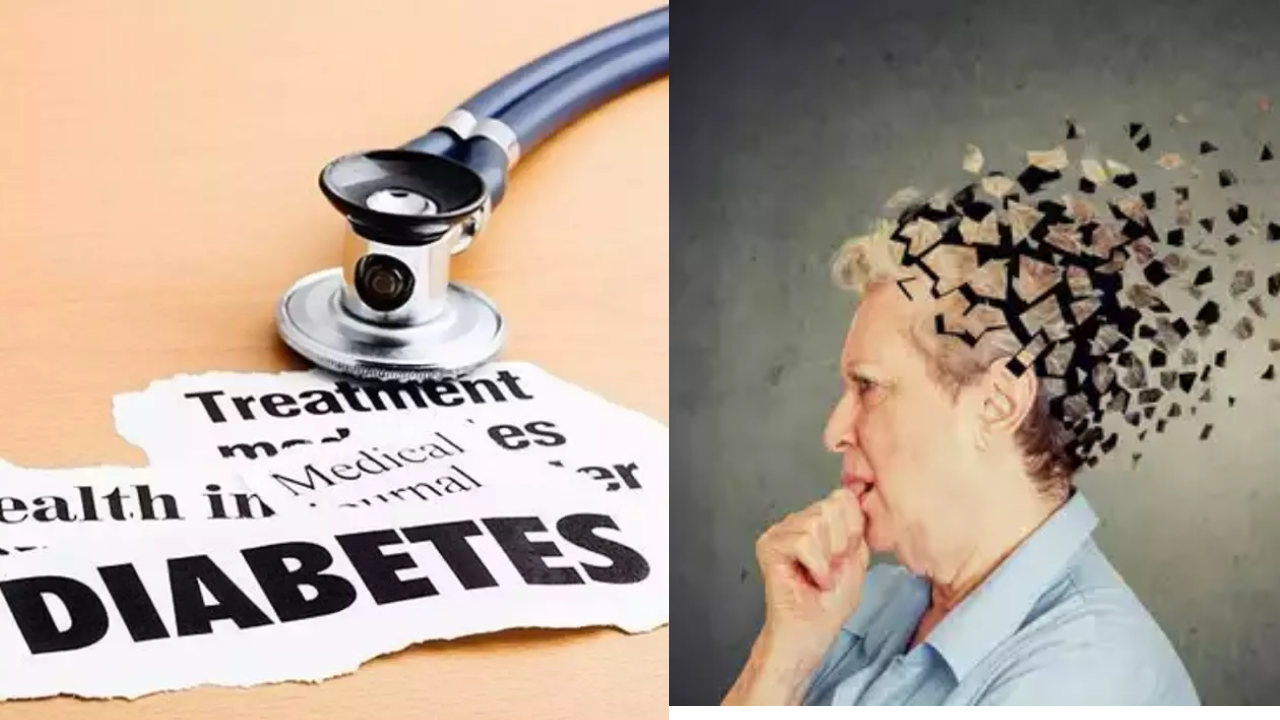NEW DELHI: A common diabetes drug could prevent dementia, with a longer treatment being related with more benefits, a study on Korean population has suggested. In over two lakh adults aged 40-69 years and having type 2 diabetes, researchers found a 35 per cent reduced risk of dementia associated with taking SGLT-2 inhibitors compared with DPP-4 inhibitors, also known as gliptins.
Further, treatment with SGLT-2 drugs over a longer duration was found to have more pronounced effects — a 48 per cent reduced risk of dementia for more than two years of treatment. Examples of SGLT-2 drugs available in India include remogliflozin and dapagliflozin, while those of DPP-4 drugs are sitagliptin, vildagliptin, and teneligliptin.
However, the researchers, including those from the Seoul National University Bundang Hospital, Korea, cautioned that the effects could have been overestimated and said that randomised controlled trials, or RCTs, are now needed to confirm these findings, published in the British Medical Journal. RCTs are considered the gold-standard of clinical trials. The team noted that details of health behaviours, such as smoking and alcohol habits, and duration for which the patients had diabetes, were not fully available.
However, the authors pointed out that this was a large study based on nationally representative data, including relatively younger people with type 2 diabetes, and results were highly consistent across subgroups. SGLT-2, or sodium-glucose cotransporter-2 (SGLT-2), inhibitor drugs help patients manage diabetes by preventing kidneys from reabsorbing sugar that the body creates. The excess sugar is then removed via urine.
On the other hand, DPP-4, or dipeptidyl peptidase-4 (DPP-4), inhibitor drugs function by blocking the DPP-4 enzyme, thereby helping the body increase insulin levels after a meal.
While SGLT-2 drugs are commonly used for treating diabetes in India, there have been rare instances of patients getting a serious infection in their genitals and surrounding areas.
For the study, the researchers used the Korea National Health Insurance Service database to identify over 1.1 lakh pairs of adults, aged 62 years on average and having type 2 diabetes, who were free of dementia and started taking either an SGLT-2 or a DPP-4 drug between 2013 and 2021. All the participants were followed for about two years to see who developed dementia.
“This large population based cohort study among adults aged 40-69 years with type 2 diabetes found a 35 percent reduced risk of dementia associated with use of SGLT-2 inhibitors compared with DPP-4 inhibitors,” the authors wrote.
The researchers also found a 39 percent reduced risk for Alzheimer’s disease and a 52 percent reduced risk for vascular dementia associated with SGLT-2 compared with DPP-4 inhibitors.
Alzheimer’s disease is the most common form of dementia, while in vascular dementia, brain function is affected due to damaged blood vessels, which block blood flow and oxygen supply.
Further, the researchers found a 48 percent reduced risk of dementia in patients taking SGLT-2 drugs for more than two years, against a 43 percent reduced risk for in those taking these drugs for two years or less.
The result suggested that a longer duration of diabetes treatment with SGLT-2 drugs could have more pronounced effects, the authors said.
Being an observational study, no firm cause-and-effect conclusions could be drawn, the authors noted, and called for randomised controlled trials to confirm their findings.
On average, dementia incidence rates in the participants were 0.22 in every 100 people over a period of one year for those taking SGLT-2 drugs. The rates for those taking DPP-4 blocking drugs were found to be 0.35 in every 100 people over a period of one year, according to the study.
A study, published in February in the journal PLoS ONE, estimated that in India, 3.4 crore older adults, aged 60 years and above, are living with mild cognitive impairment—the stage preceding dementia—affecting their daily lives and activities in some manner.
Further, treatment with SGLT-2 drugs over a longer duration was found to have more pronounced effects — a 48 per cent reduced risk of dementia for more than two years of treatment. Examples of SGLT-2 drugs available in India include remogliflozin and dapagliflozin, while those of DPP-4 drugs are sitagliptin, vildagliptin, and teneligliptin.
However, the researchers, including those from the Seoul National University Bundang Hospital, Korea, cautioned that the effects could have been overestimated and said that randomised controlled trials, or RCTs, are now needed to confirm these findings, published in the British Medical Journal. RCTs are considered the gold-standard of clinical trials. The team noted that details of health behaviours, such as smoking and alcohol habits, and duration for which the patients had diabetes, were not fully available.
However, the authors pointed out that this was a large study based on nationally representative data, including relatively younger people with type 2 diabetes, and results were highly consistent across subgroups. SGLT-2, or sodium-glucose cotransporter-2 (SGLT-2), inhibitor drugs help patients manage diabetes by preventing kidneys from reabsorbing sugar that the body creates. The excess sugar is then removed via urine.
On the other hand, DPP-4, or dipeptidyl peptidase-4 (DPP-4), inhibitor drugs function by blocking the DPP-4 enzyme, thereby helping the body increase insulin levels after a meal.
While SGLT-2 drugs are commonly used for treating diabetes in India, there have been rare instances of patients getting a serious infection in their genitals and surrounding areas.
For the study, the researchers used the Korea National Health Insurance Service database to identify over 1.1 lakh pairs of adults, aged 62 years on average and having type 2 diabetes, who were free of dementia and started taking either an SGLT-2 or a DPP-4 drug between 2013 and 2021. All the participants were followed for about two years to see who developed dementia.
“This large population based cohort study among adults aged 40-69 years with type 2 diabetes found a 35 percent reduced risk of dementia associated with use of SGLT-2 inhibitors compared with DPP-4 inhibitors,” the authors wrote.
The researchers also found a 39 percent reduced risk for Alzheimer’s disease and a 52 percent reduced risk for vascular dementia associated with SGLT-2 compared with DPP-4 inhibitors.
Alzheimer’s disease is the most common form of dementia, while in vascular dementia, brain function is affected due to damaged blood vessels, which block blood flow and oxygen supply.
Further, the researchers found a 48 percent reduced risk of dementia in patients taking SGLT-2 drugs for more than two years, against a 43 percent reduced risk for in those taking these drugs for two years or less.
The result suggested that a longer duration of diabetes treatment with SGLT-2 drugs could have more pronounced effects, the authors said.
Being an observational study, no firm cause-and-effect conclusions could be drawn, the authors noted, and called for randomised controlled trials to confirm their findings.
On average, dementia incidence rates in the participants were 0.22 in every 100 people over a period of one year for those taking SGLT-2 drugs. The rates for those taking DPP-4 blocking drugs were found to be 0.35 in every 100 people over a period of one year, according to the study.
A study, published in February in the journal PLoS ONE, estimated that in India, 3.4 crore older adults, aged 60 years and above, are living with mild cognitive impairment—the stage preceding dementia—affecting their daily lives and activities in some manner.

